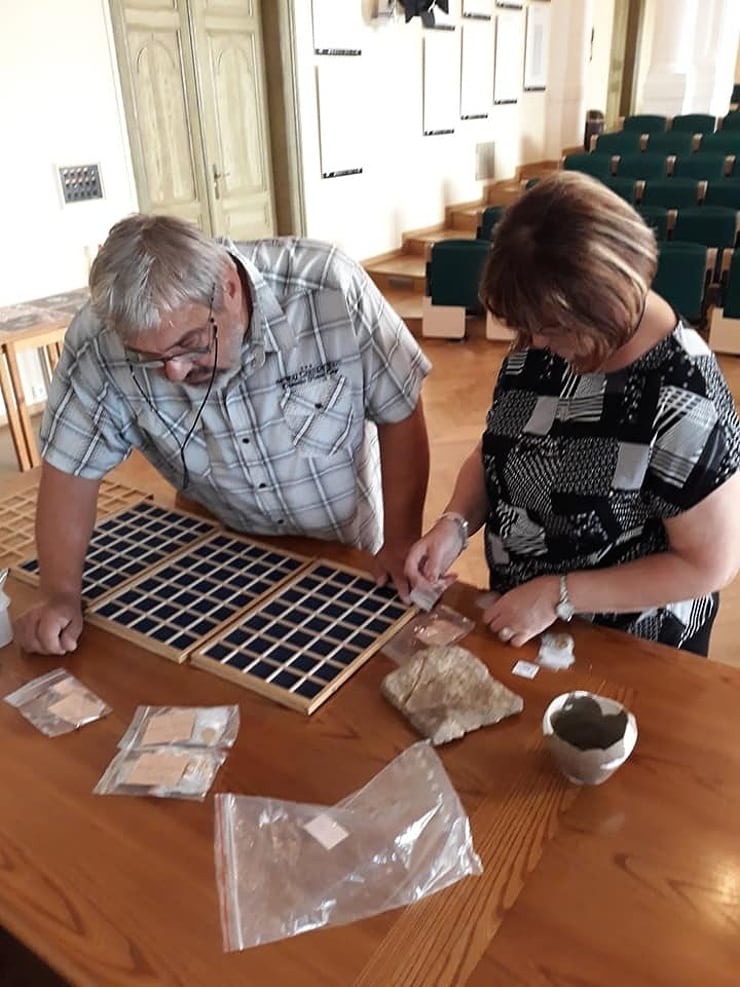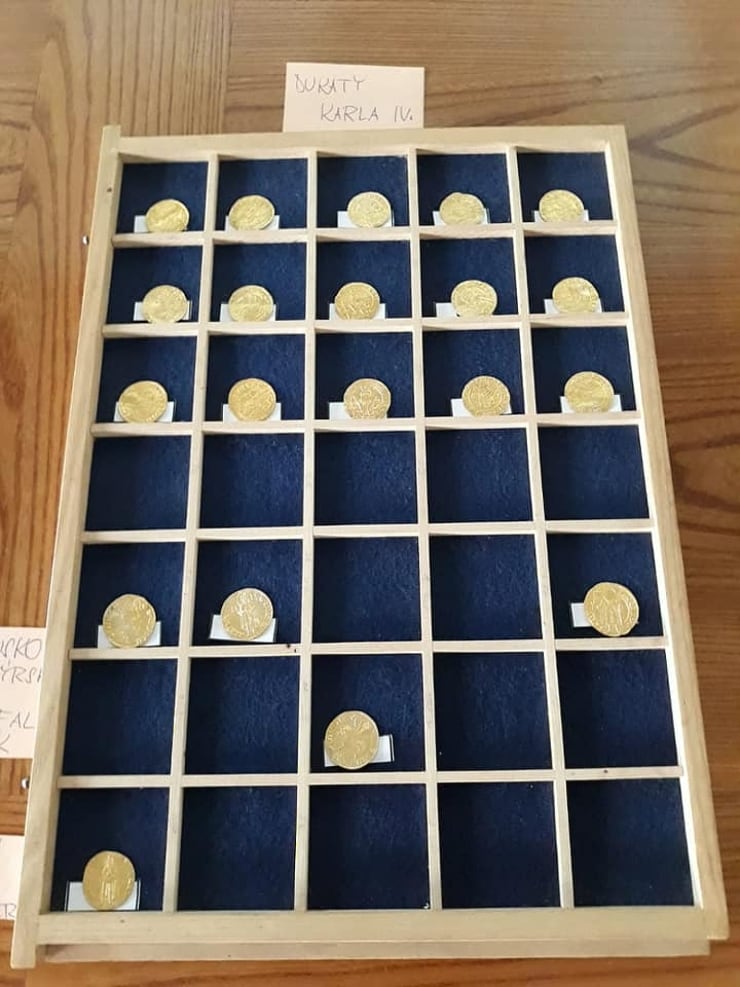
14 Sep 2020 Treasure worth four million
Categories: Minting - Numismatics , Finds and rescue research in the Czech Republic , Calendar
The treasure discovered last year by a couple in the forest near the Kladruby monastery in the Tachov region is worth around four million crowns. The depot contained 435 gold and silver coins from the fourteenth century.
The treasure was found by two young people in March and its historical value was announced by experts about six months later. It is a unique find in western Bohemia. The treasure was located about five kilometres from the aforementioned monastery. In the fourteenth century, where the coins were found, their owner could buy a whole village for such a quantity.
The coins had been hidden in a shallow hiding place covered by a flat stone. The treasure was found by two young people while walking in the forest (some sources say only a man). They noticed a spot that had been torn open by wild boars. A gold coin glittered in the leaves, with a few silver ones around it. When the finders picked up the stone, they discovered another.
The finders behaved in an exemplary manner and immediately called the West Bohemian Museum in Pilsen. "Overturning the partially protruding stone revealed the original location of the depot with many other coins," said Romana Němečková, a spokeswoman for the museum.
It took two months for museum experts to clean the coins. The hoard included gold Hungarian coins such as a ducat of Charles Robert, 42 ducats of Louis I the Great, 30 ducats with the Anjou coat of arms of the same ruler.
Furthermore, the ducats of the Kingdom of Bohemia, namely thirteen ducats of Charles IV, two ducats with the imperial crown of Charles IV. Z ostatních zemí jsou zastoupeny dukáty Albrechta Rakouského, dukát Ruprechta I. Falckého, dukát hanzovního města Lübeck, tři stříbrné groše Václava II. three silver grosz of John of Luxembourg and 339 silver grosz of Charles IV.
Who hid the treasure remains a mystery. It is always difficult for experts to trace back who owned the coins. From the location of the coins, we can only assume that someone hid them in haste. The owner of the treasure was probably fleeing from great danger. It could have been someone from the monastery or a robber who seized the treasure. At the time of the hiding, contemporary records mention disputes on the monastery's estate, where violence occurred.
According to museum experts, the treasure was buried in the late 1470s, before 1378 to 1379. The youngest coins of the depot are the groats of Charles IV. However, the only coin of Wenceslas IV was no longer in the discovery.



Sources: www.idnes.cz, www.aktualne.cz, www.plzen.cz
The article is included in categories:
- Archive of articles > Minting - Numismatics
- Archive of articles > Archaeology > Finds and rescue research in the Czech Republic
- Archive of articles > Calendar
Post
No to by mě šlehlo
:D si koupím prase místo detiku že jim to furt žerou
Žila byla v lese tři prasátka. Dva kanečci a bachyňka . Nejstarší kaneček se jmenoval Deus a ten mladší Equinox. Bachyňka se jmenovala Nokta. Byla to zvláštní prasátka , protože milovala kovové věci, které kdysi dávno zakopali lidé.........
Teď vážně......alespoň to odevzdali, kdokoliv jiný by to už dávno rozprodával na aukru , třeba mládě od Srny..... 
Čtyři miliony mě přijdou tedy málo. Jenom ty dukáty Karla IV. mají rozhodně větší hodnotu. 
Přesně, vůbec nevím, jak se určuje historická hodnota. Vždycky jsem si myslel, že je násobně vyšší než tržní hodnota, protože zahrnuje i ty okolnosti a poznání kolem nálezu/předmětu. Chci nakupovat mince tam, kde nakupují znalci muzea 
Toto raději nenajít, bo bych dostal určitě infarkt 
To je už vcelku důstojný nález 
jj ... nezmění ... a ať to tak zůstane ... 
Já bláhovec procházím lesy a mávám a mávám....místo toho bych měl důkladně zkoumat divočáky rozrytá místa 
Zprostředkovával jsem teď předání jednoho depotu mincí do NM. Našel ho hledač detektorem také v prostoru rozrytém prasaty. Bohužel to byl depot brakteátů, které kanci rozdupali na kousky 
















